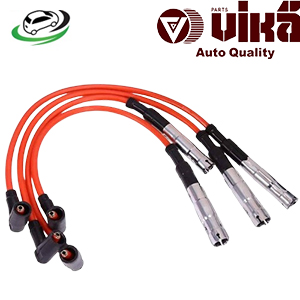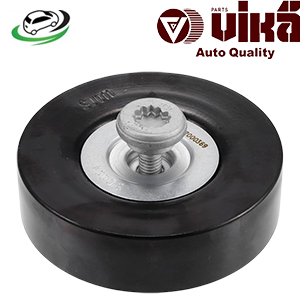-8%
Get VW Passat B5 1.8T / VW Passat B5 FWD 1.8T Oil Pan 06B103601P
The oil pan is a metal or composite reservoir located at the bottom of the engine block. It collects and stores engine oil that lubricates various engine components, ensuring that they operate smoothly and efficiently. The oil pan is typically bolted to the bottom of the engine block and has a gasket to prevent leaks.
Anatomy of an Oil Pan
An oil pan typically consists of several components:
- Pan Body: The main structure of the oil pan, which is usually made from stamped steel or aluminum. The shape is designed to fit snugly against the engine block and maximize oil capacity.
- Baffle: Some oil pans have internal baffles that help prevent oil sloshing during sudden movements, such as acceleration or cornering. These baffles ensure that the oil pickup remains submerged in oil, maintaining proper lubrication.
- Oil Pickup Tube: This tube extends from the bottom of the oil pan to the oil pump. It draws oil from the pan and directs it to the oil pump for circulation throughout the engine.
- Drain Plug: Located at the lowest point of the oil pan, the drain plug allows for easy oil changes by enabling the old oil to be drained out.
- Gasket: A gasket seals the oil pan to the engine block, preventing oil leaks. The gasket must be made from materials that can withstand high temperatures and oil exposure.
2. How Does an Oil Pan Work?
The oil pan serves as a reservoir for engine oil, allowing it to circulate effectively throughout the engine. Here’s how it works:
- Oil Storage: The oil pan holds the engine oil that lubricates the moving parts of the engine, such as the crankshaft, camshaft, and bearings. This oil reduces friction, minimizes wear, and helps dissipate heat.
- Oil Pumping: When the engine is started, the oil pump draws oil from the oil pan through the oil pickup tube. The pump pressurizes the oil and circulates it throughout the engine via oil galleries.
- Lubrication: As the oil circulates, it coats engine components, creating a protective barrier that reduces friction. This lubrication is critical for the longevity and performance of the engine.
- Cooling: In addition to lubrication, the oil also helps cool engine components by absorbing heat. The oil returns to the oil pan, where it dissipates heat before being pumped back through the engine.
- Filtration: While circulating, the oil passes through an oil filter that removes contaminants and debris, ensuring that only clean oil lubricates the engine.
3. Types of Oil Pans
Oil pans can vary in design and construction based on the engine type and application. The main types include:
1. Wet Sump Oil Pans
Most common in standard passenger vehicles, wet sump oil pans store the engine oil in the pan itself. As oil is drawn out by the oil pump, it is replaced by new oil that drains back into the pan from the engine’s upper sections. Wet sump systems are generally simpler and lighter than their dry sump counterparts.
2. Dry Sump Oil Pans
Dry sump systems are commonly used in high-performance or racing applications. In this system, the oil is stored in a separate tank rather than in the pan. The oil pump draws oil from the tank and circulates it through the engine, while another pump returns the oil to the tank. This system allows for better oil control, improved lubrication during high G-forces, and increased oil capacity.
3. Aluminum Oil Pans
Aluminum oil pans are lighter than traditional steel pans and offer better heat dissipation. They are often used in performance applications where weight savings and cooling efficiency are crucial. However, they can be more expensive and less durable than steel pans.
4. Steel Oil Pans
Steel oil pans are more common in standard vehicles due to their durability and cost-effectiveness. They are resistant to impact and damage, making them suitable for everyday use.
4. Benefits of a Properly Functioning Oil Pan
A well-maintained oil pan is vital for engine health, providing several benefits:
- Efficient Lubrication: The oil pan ensures that a sufficient amount of oil is available for lubrication, reducing friction and wear on engine components.
- Heat Dissipation: By storing oil, the pan allows it to cool before being recirculated, preventing overheating and promoting consistent engine performance.
- Contaminant Settling: Over time, debris and contaminants can settle at the bottom of the oil pan. This can prevent them from circulating back into the engine and causing damage.
- Leak Prevention: A properly sealed oil pan prevents oil leaks, which can lead to low oil levels and potential engine damage.
5. Common Issues with Oil Pans
Despite their robust design, oil pans can experience several common issues that can lead to engine problems:
1. Oil Leaks
One of the most common issues is oil leaks, often caused by a deteriorating gasket or a damaged oil pan. Leaks can lead to low oil levels, resulting in inadequate lubrication and potential engine failure.
2. Dents and Damage
Oil pans can be damaged by road debris, impacts, or corrosion. Dents can affect the oil pickup tube, leading to inadequate oil flow and potential engine damage.
3. Clogging
Over time, sludge and contaminants can accumulate in the oil pan, leading to clogged oil pickup tubes. This can restrict oil flow to the engine and result in poor lubrication.
4. Corrosion
Especially in environments with road salt or chemicals, steel oil pans can corrode over time. Corrosion weakens the pan, increasing the risk of leaks.
6. Signs of Oil Pan Problems
Recognizing oil pan issues early can help prevent severe engine damage. Common signs include:
- Oil Spots: Puddles or spots of oil under the vehicle indicate potential leaks from the oil pan.
- Low Oil Levels: Frequent need for oil top-offs may indicate a leak or internal consumption issues.
- Warning Lights: The oil pressure warning light on the dashboard may illuminate if there are problems with oil flow.
- Engine Noise: Unusual noises, such as knocking or ticking, may indicate insufficient lubrication due to low oil levels.
7. Installation and Replacement of Oil Pans
If an oil pan needs to be replaced, the following steps outline the general installation process:
1. Preparation
- Ensure the engine is cool and the vehicle is parked on a flat surface. Disconnect the negative battery terminal for safety.
2. Drain Oil
- Remove the drain plug and allow the engine oil to fully drain into a pan. Replace the drain plug once the oil has drained.
3. Remove the Old Oil Pan
- Detach any components obstructing access to the oil pan, such as exhaust pipes or crossmembers. Remove the bolts securing the oil pan to the engine block.
4. Clean Surfaces
- Thoroughly clean the gasket surfaces on both the oil pan and engine block to ensure a proper seal for the new gasket.
5. Install New Gasket and Pan
- Place a new gasket on the oil pan, ensuring proper alignment. Position the oil pan onto the engine block and secure it with bolts, tightening them to the manufacturer’s specifications.
6. Refill Engine Oil
- Refill the engine with the appropriate type and amount of oil. Reconnect the negative battery terminal.
7. Check for Leaks
- Start the engine and allow it to run for a few minutes. Check for any leaks around the oil pan and tighten any bolts if necessary.
8. Maintenance of Oil Pans
Regular maintenance can prolong the life of the oil pan and the engine:
1. Regular Oil Changes
Frequent oil changes help prevent sludge buildup in the oil pan, maintaining efficient oil flow and lubrication.
2. Inspect Gaskets and Seals
Periodically inspect the oil pan gasket and seals for signs of wear or damage. Replacing worn gaskets can prevent leaks.
3. Monitor Oil Levels
Regularly check the oil level and quality. Low oil levels can lead to inadequate lubrication and increased wear on engine components.
4. Inspect for Damage
Regularly inspect the oil pan for dents, corrosion, or other damage. Addressing issues early can prevent more severe problems.
Conclusion
The oil pan is a vital component of an internal combustion engine’s lubrication system, playing a crucial role in storing and circulating engine oil. Understanding its function, types, benefits, common issues, and maintenance can help vehicle owners ensure optimal engine performance and longevity. By investing in a quality oil pan and performing regular maintenance, you can help protect your engine from damage, improve efficiency, and enhance overall vehicle reliability. Regular care of the oil pan is essential for maintaining a healthy and efficient engine, ensuring a smooth and enjoyable driving experience for years to come.
Follow us on Facebook for more parts.




Reviews
Clear filtersThere are no reviews yet.